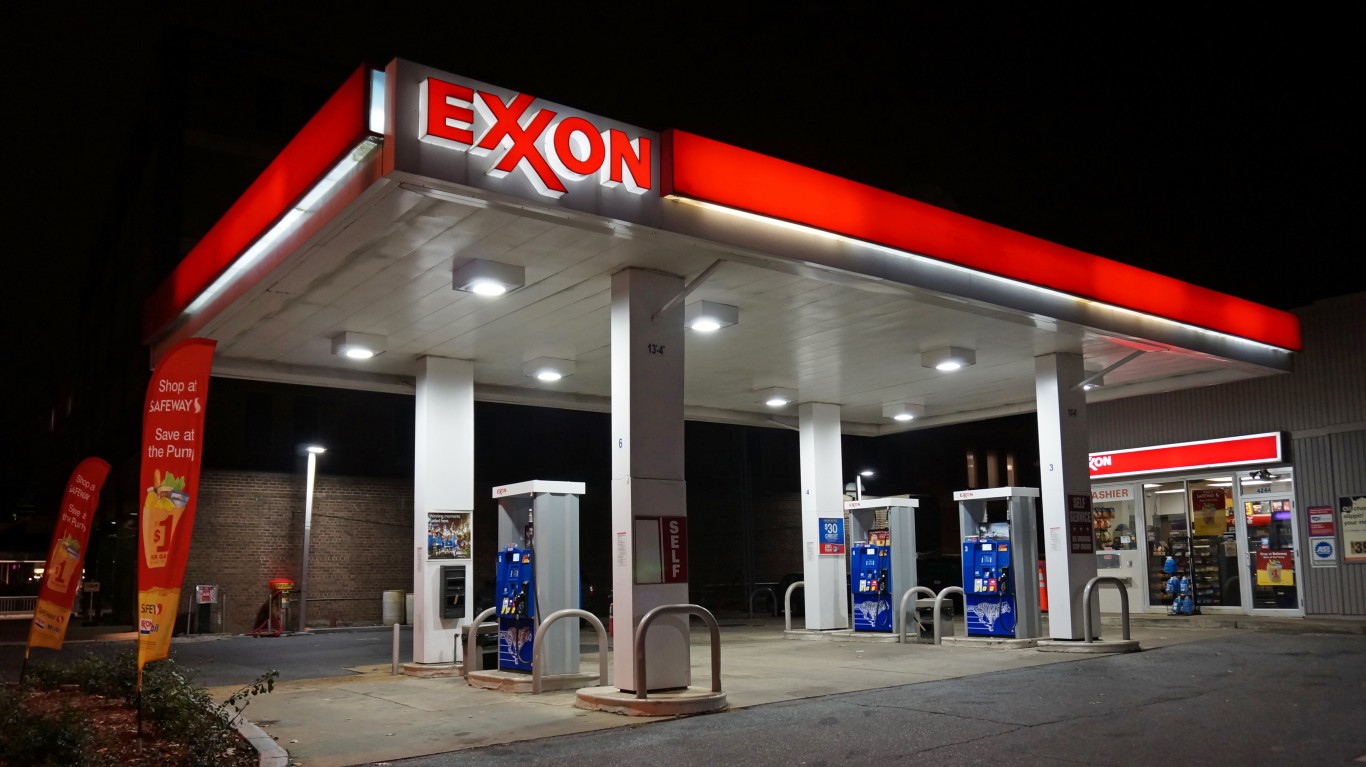
Borrowing to pay dividends has become a lot more common in the past half-dozen years or so. With interest rates at historic lows, and armed with a solid credit rating and balance sheet, it would be mismanaging assets just to leave all the available cash on the table.
That’s been Exxon Mobil Corp.’s (NYSE: XOM) strategy for several years, and the company’s stock has borne the brunt of analysts’ displeasure with that way of doing business. For an oil company, particularly. Not so much for some tech giants (looking at you, Apple).
When Exxon doubled down on this strategy at its Investor Day on Thursday, investors shaved nearly 5% from the share price.
Rather than pump up free cash flow, Exxon has invested in more exploration and development. In its presentation Thursday, Exxon noted that margin basis is “not a prediction of [the] future market environment and [is] not used to justify investment plans.” Instead, “investments must be robust to a range of prices and market scenarios.”
Exxon expects cash flow from operations to rise at an annual rate of about 10% through 2025. The company said that the growth was “enabled by accretive investments.” Further, natural depletion and demand fundamentals “underpin investing as a capital allocation priority” and this approach to value creation is “fundamental to paying [a] reliable, growing dividend over the long term.”
Exxon expects global energy demand to grow and for related emissions to rise as well. The solutions to additional emissions are technological. Commercial transportation (planes, trains, buses, trucks) require energy-dense biofuels that are compatible with existing infrastructure. The solution to power generation emissions is carbon capture and storage (CCS) while commercial emissions can be mitigated with CCS and energy-efficient manufacturing.
The company touches on its work and research in each area but doesn’t talk about the size of its investments. Capital spending on fossil fuels is expected to range between $30 billion and $35 billion a year through 2025. Spending to reduce carbon emissions will be minuscule next to that amount.
Competitor Chevron Corp. (NYSE: CVX) said during its investor presentation Tuesday that it plans to return $80 billion to shareholders in the form of dividends and buybacks over the next five years. While the number is astounding, the strategy is the same as the one that had Chevron stock trading at more than 60 times earnings over the past 12 months. The company’s forward price-to-earnings ratio is 14.03, now trailing Exxon’s 14.47 ratio. Exxon’s trailing 12-month ratio was 15.07. Like Exxon, Chevron’s financial commitment to reducing carbon emissions is barely evident.
As the share prices for both companies have tumbled, dividend yields have risen. Exxon’s yield is now 6.78% while Chevron’s is 5.47%. Both trade nearer their 52-week lows than their highs. Those lows were set just last week, so that’s no big surprise.
Exxon Mobil stock traded down about 4.7% just before noon Thursday, at $49.95 in a 52-week range of $48.01 to $83.49. The stock’s 12-month consensus price target is $72.90.
Chevron stock traded down about 2.3% to $96.24, in a range of $90.11 to $127.34. The price target is $129.59.
Thank you for reading! Have some feedback for us?
Contact the 24/7 Wall St. editorial team.
 24/7 Wall St.
24/7 Wall St.



